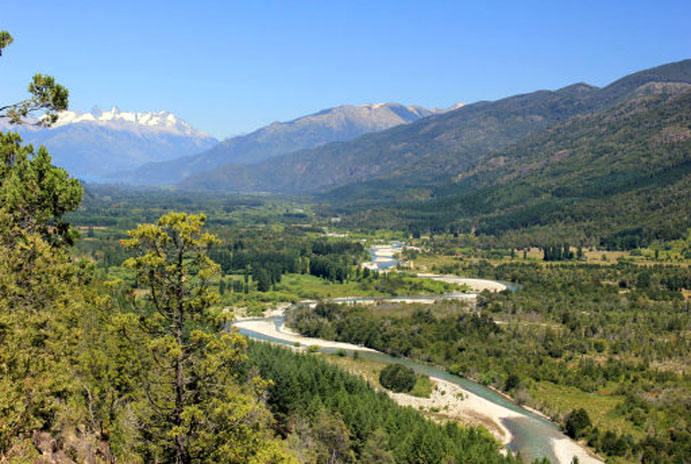Kinal is located 9 km south west of Rio Azul in the Peten Basin region of Guatemala. The site of Kinal (Place of the Sacred Fire) dates from the Classic period of Mesoamerican chronology (c. 600 - 900 C.E.), with evidence for a substantial and expansionary building program dating from the first half of the 8th century C.E.. Kinal was discovered in the 1960s by archaeologist Ian Graham while he was carrying out an archaeological survey of the region, although no excavations were undertaken at the site at that time. The first archaeological excavations were carried out in 1990 by the Proyecto Regional Ixcanrio ("Ixcanrio Regional Project"), directed by Richard Adams of the University of Texas. The site has suffered significant damage at the hands of looters but is now protected by custodians. Many of the city's structures have been damaged by looters' tunnels, some of which have cut entirely through them. According to Adams, Kinal consists of a ballcourt, 21 plazas and more than 500 structures, many of which contained preserved vaults. The site contains 32 sculptured monuments, including stelas and altars, arranged along a sacbe oriented east-west. The tallest pyramid at the site is 27 meters high. The site covers an area of approximately 2 square km. A dam at the site dates to the Preclassic period. This feature was used for intensive agricultural production, as were terraces also built at Kinal. All of the structures at Kinal were built using masonry, often utilising natural limestone outcrops as a foundation. Stonework varies considerably in quality, from finely cut, well-fitting blocks to roughly worked irregular stones.


Copyright: © 1999 thru 2021. All the content; content being images, statements and writing of this website including E-Book are the copyright of Freedom8.net and Walter F. Petrucci, West Hurley, New York.
All rights expressly reserved and as such, protected by U.S. and International Copyright Laws. Design by freedom8 webmaster Version8.